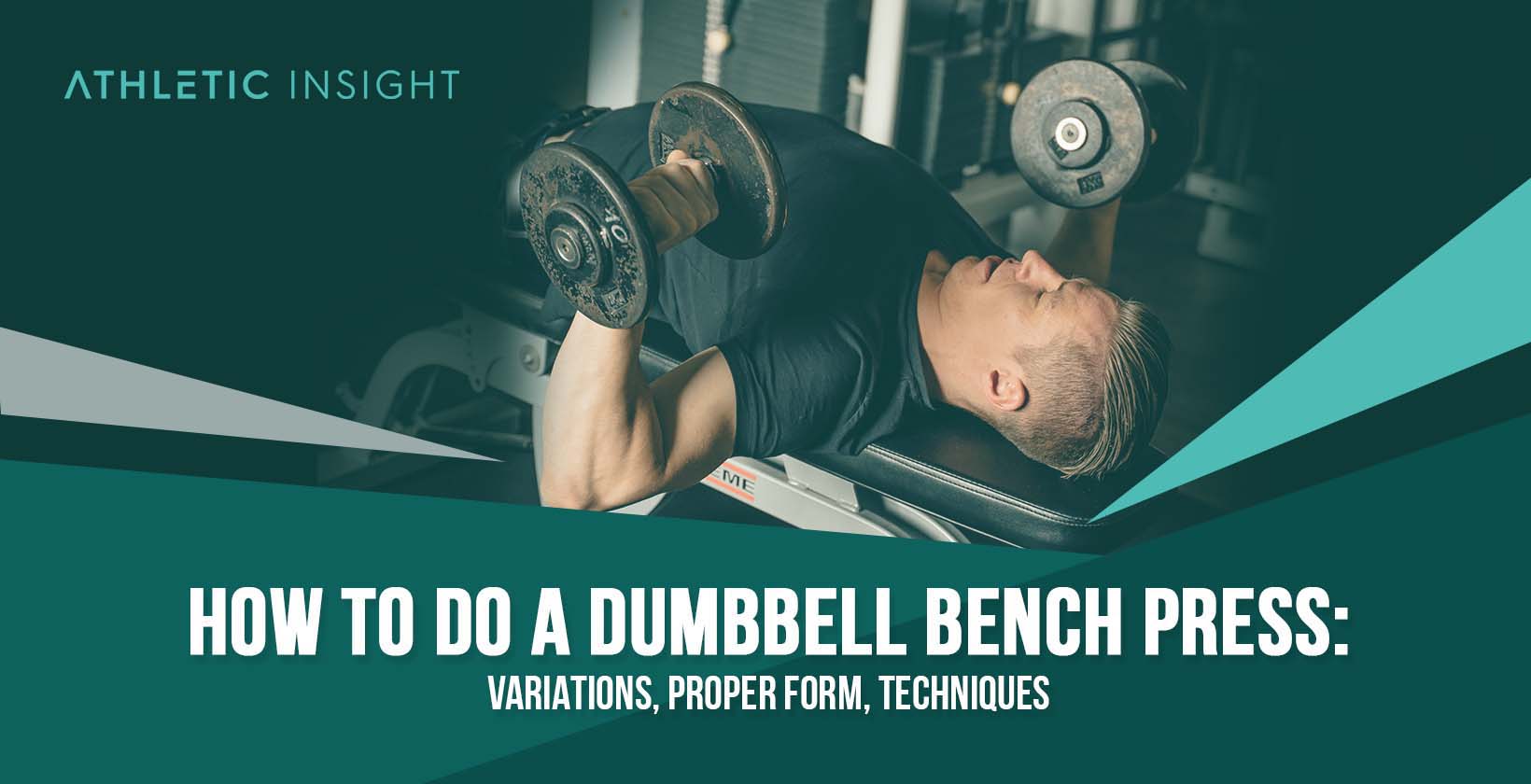The dumbbell bench press is a compound exercise that targets the pectorals, triceps, deltoids, and rotator cuffs.. It’s beneficial for athletes hoping to overcome a plateau with the barbell bench press or looking to balance the chest muscles. Additionally, this exercise gives athletes a greater range of motion than the traditional barbell press.
Proper dumbbell bench press form starts with the correct setup, including a bench and dumbbells. Sitting on the bench, grip the dumbbells and lie down. With arms extended so that the weights are over the chest, engage the core and squeeze the scapulas together for stability. Slowly lower the weights in a smooth, controlled motion until the elbows reach 45-degree angles. Press the weights back up without touching them at the top.
Variations of the dumbbell bench press include the incline, decline, floor, wrist rotation, neutral grip, alternating, and single-arm.
Common mistakes for this exercise include the following.
- Using weights that are too heavy.
- Arching the back too much or not at all.
- Not getting the correct angle with the arms.
- Lifting the head off the bench.
Performing the exercise incorrectly can lead to injuries to the pectorals or shoulders. Using too much weight can tear the pectoralis major muscles or overload the shoulders and damage the joint. To prevent injury, lifters need to use proper form and only use as much weight as they can safely manage. Most of the injuries stem from using too much weight or poor form.
How to Perform Dumbbell Bench Press with Proper Form?
Also known as the dumbbell flat bench press or the dumbbell chest press, the dumbbell bench press is an upper body exercise that primarily targets your chest and pectoral muscles. It has the additional benefit of working your arms and shoulders as well.
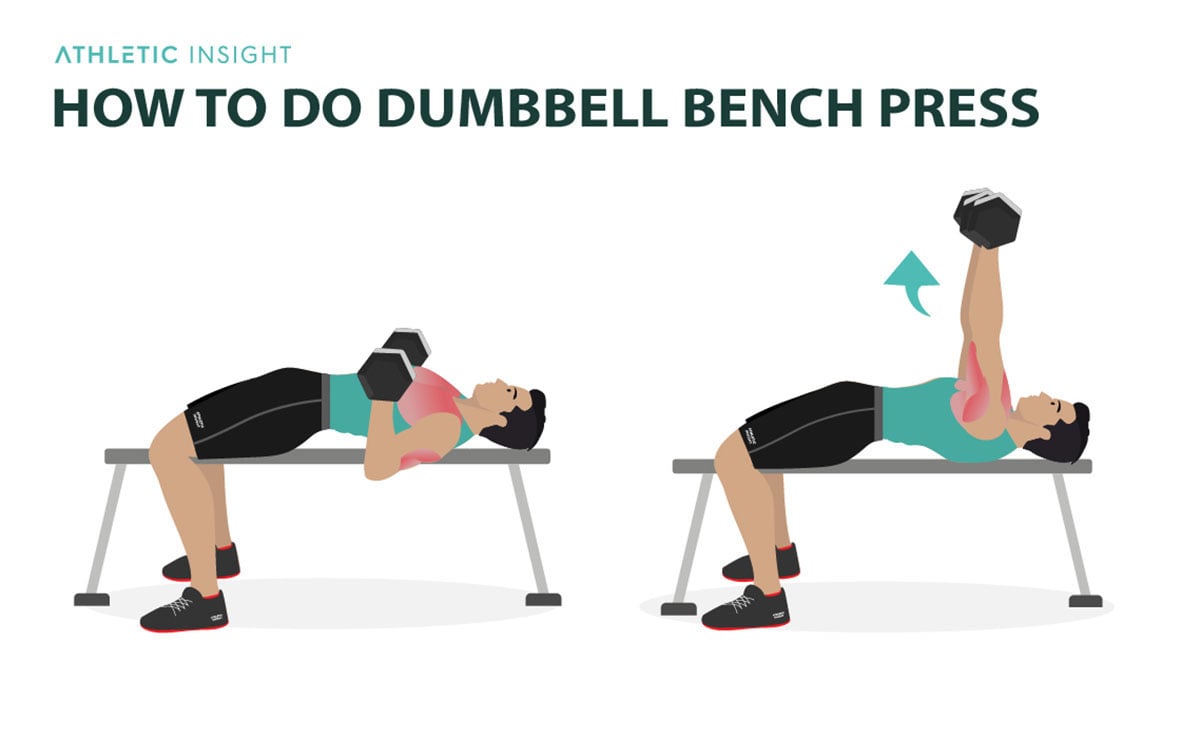
The dumbbell bench press is a compound lift. A compound lift exercises multiple muscle groups simultaneously. The dumbbell bench press is one of the best chest exercises for building mirror muscles, the ones you check out in your reflection.
Like all weightlifting exercises, an athlete must perform the dumbbell bench press with proper form and technique. The good form ensures that the athlete gets the most out of the movement, keeping them safe from potential injury.
The dumbbell bench press has five steps.
- Prepare Your Space
- Get Set
- Set Your Back
- Lower the Dumbbells
- Press the Weight
The following five steps will help you master the dumbbell bench press. Remember, it is more important to have proper form than large amounts of weight. Once you have mastered the technique, you will add more weight to your dumbbell bench press.
Proper form is achieved by completing the steps outlined below without cheating or compromising on technique.
1. Prepare Your Space
Select a set of dumbbells of an appropriate weight and a bench.
2. Get Set
Take a seat on the bench and firmly grasp the dumbbells. Lift the dumbbells from the floor to your knees. Once you are comfortable with your grip strength on the dumbbells, kick each dumbbell up to your shoulders and lay back on the bench. Your arms should be fully extended, and the dumbbells should be over your chest.
3. Set Your Back
Before you complete the first repetition, it is essential to set your back. This is a step that many athletes overlook.
To set your back, flex your shoulder blades and squeeze them together. Push your feet firmly into the floor and flex your core. By flexing your abdomen and back and keeping your feet firmly on the floor, you are maximizing your body’s ability to push the weight away from you.
4. Lower the Dumbbells
Your elbows should be directly below your wrists as you prepare to lower the dumbbells. Keeping your elbows and wrists in alignment will keep your shoulders in the correct position.
You should now slowly lower the dumbbells. Make sure that you do this with complete control. Your elbows should stay at a 45-degree angle, and your arms should not shake as you lower the weight. If this happens, the weight is too heavy.
Lower the dumbbells until they are slightly below chest level. Your shoulder bladers should stay flexed and pulled down toward the hips, and your back should have a slight arch.
5. Press the Weight
With your back and core tight and your feet firmly on the floor, press the dumbbells while squeezing your pecs. You should feel a squeeze in the center of your chest as you press the weight. Your elbows should stay at a 45-degree angle during the press. Additionally, the weight should move straight up and down.
Repeat these steps until you have completed your set.
If you follow these steps, you will quickly master the proper form of the dumbbell bench press. Incorporating this exercise into your workouts will help you quickly build a strong and defined upper body.
What are the Phases of Conventional Dumbbell Bench Press?
The dumbbell bench press is fundamentally a chest exercise. However, one of its benefits over the barbell bench press is that it also works your arms and shoulders.
The dumbbell bench press can be broken down into five phases.
- Lie Down to the Bench with Proper Form
- Learn How to Lift the Dumbbells
- Adjust the Points of Contact for Bench Press
- Determine the Optimum Weight for the Chest Muscles
- Protect the Concentration for Performing the Bench Press
Since the dumbbell bench press is a compound lift, it is essential to understand each exercise stage. If you know the individual phases of the exercise, then you know how to practice and master the form of each one.
1. Lie Down to the Bench with Proper Form
The first phase of the dumbbell bench press will set you up for success. As an athlete lies down on the bench and set themselves, they should keep their feet firmly planted on the floor, tighten their core, and pull their shoulder blades together.
It is essential to have a strong foundation when completing a dumbbell bench press. The proper form will maximize your strength when pressing the weight away from you. If you fail to use an appropriate form, your gains from the dumbbell bench press will be limited.
2. Learn How to Lift the Dumbbells
One of the dumbbell bench press challenges is lifting the dumbbells to the appropriate location. Unlike the barbell bench press, you cannot rack the weight between sets.
After the athlete is seated on the bench, they should firmly grasp the dumbbells and lift them onto their knees one at a time. As the athlete lays down, they should “kick” the dumbbells up above their chest.
When they have completed a set, this motion should be reversed. The weight should be lowered to the athlete’s knees and placed on the floor. This portion of the exercise is potentially dangerous, and heavyweight should be done with the assistance of a spotter.
3. Adjust the Points of Contact for Bench Press
When an athlete is getting ready to perform a dumbbell bench press, they need to know their grip strength and points of contact. This exercise can become dangerous if the dumbbells are too heavy and surpass their grip strength.
Additionally, the athlete should be aware of their hand positioning. Their hands should be in the middle of the dumbbell to achieve a balanced weight distribution.
4. Determine the Optimum Weight for the Chest Muscles
Selecting the appropriate weight for a dumbbell bench press is essential for performing this exercise. To start, an athlete should choose a weight that they can control for three sets of 8 repetitions. Athletes can adjust the amount of weight up and down based on the number of sets and repetitions.
5. Protect the Concentration for Performing the Bench Press
The dumbbell bench press is a compound lift and requires multiple steps to perform correctly. It can be easy to get distracted. To maximize their performance on a dumbbell bench press, an athlete must protect their concentration and master each phase of the dumbbell bench press.
What are the Mistakes for Dumbbell Bench Press Form?
We’ve included some common Dumbbell Bench Press Mistakes athletes make when performing the dumbbell bench press. You should avoid these when learning a good dumbbell bench press form.
1. Using Too Heavy Weights
Many athletes who incorporate the dumbbell bench press into their workout routine are influenced by what they see on social media and in the movies. Instead of using an appropriate amount of weight, they try to lift as much as possible.
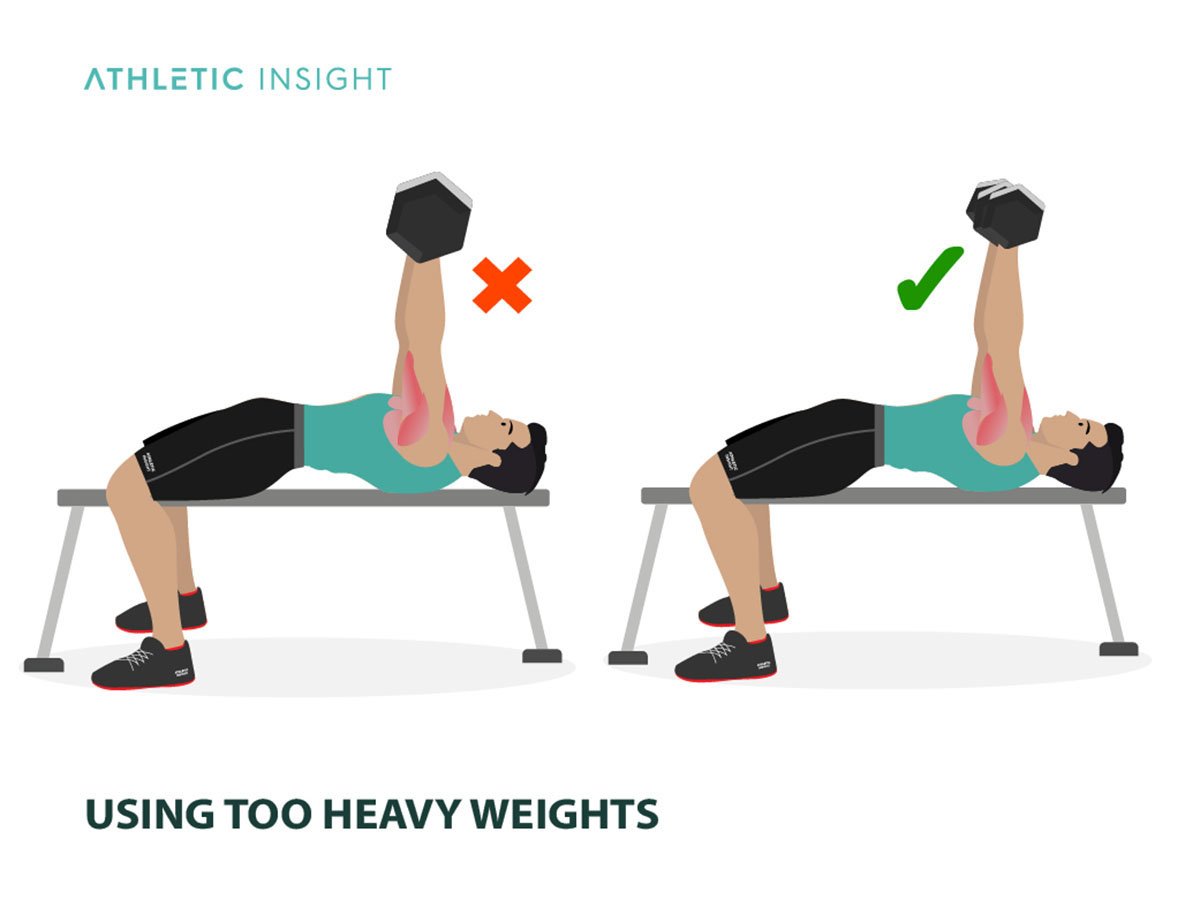
Using too much weight can prevent an athlete from using conventional dumbbell bench press form, but it can also be dangerous. Additionally, lifting too much weight will prevent athletes from maximizing their gains.
2. Not Having a Spotter
Many athletes perform the dumbbell bench press without a spotter. This is acceptable as long as they use low to medium amounts of weight. If an athlete is trying to max out or bench press big dumbbells, it is essential to use a spotter. A spotter can help an athlete maintain a good dumbbell bench press form and ensure safety.
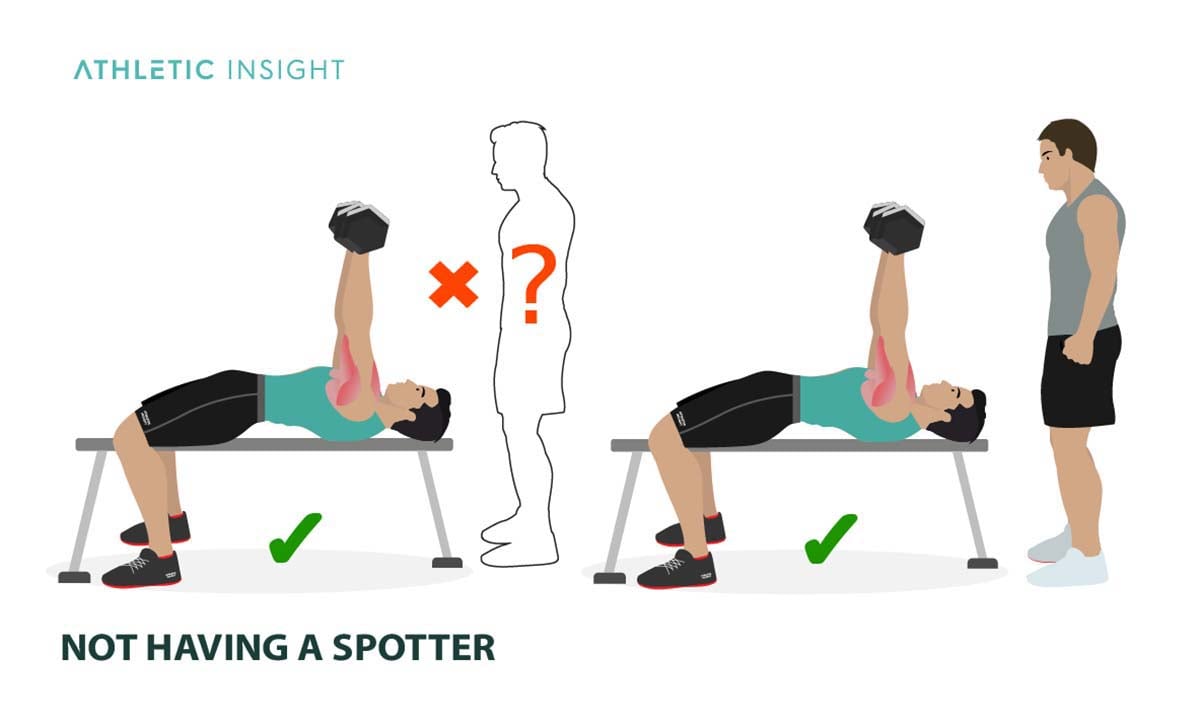
3. Arching Your Back Too Much
Some athletes arch their back too much when performing a dumbbell bench press. Conventional dumbbell bench press form requires an athlete to have a slight arch. They should not be trying to fold in two. Arching your back too much can hurt your lower back.
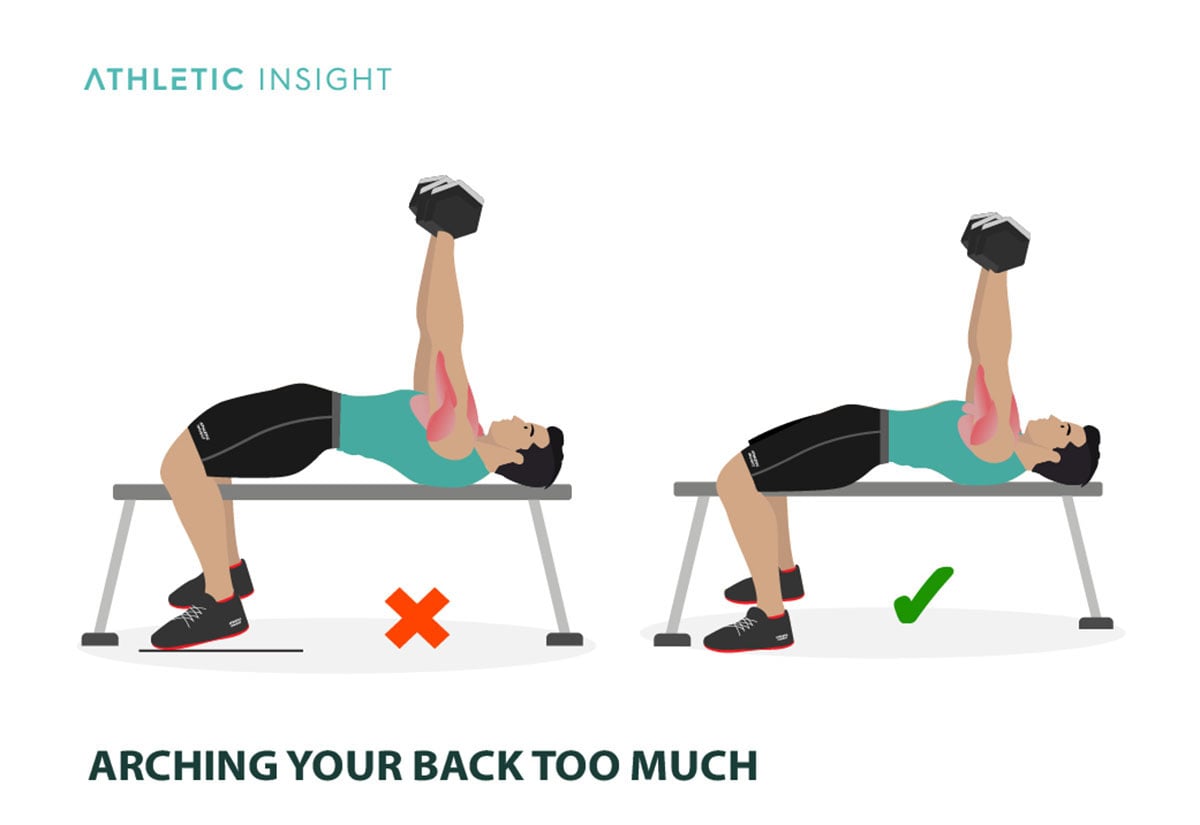
4. Not Arching Your Back
Alternatively, some athletes perform the dumbbell bench press without any arch in their back. Your back should never be flat against the bench. Bench pressing with no arch prevents an athlete from pushing off the ground effectively with their feet, and it makes it more difficult to squeeze your shoulder blades.
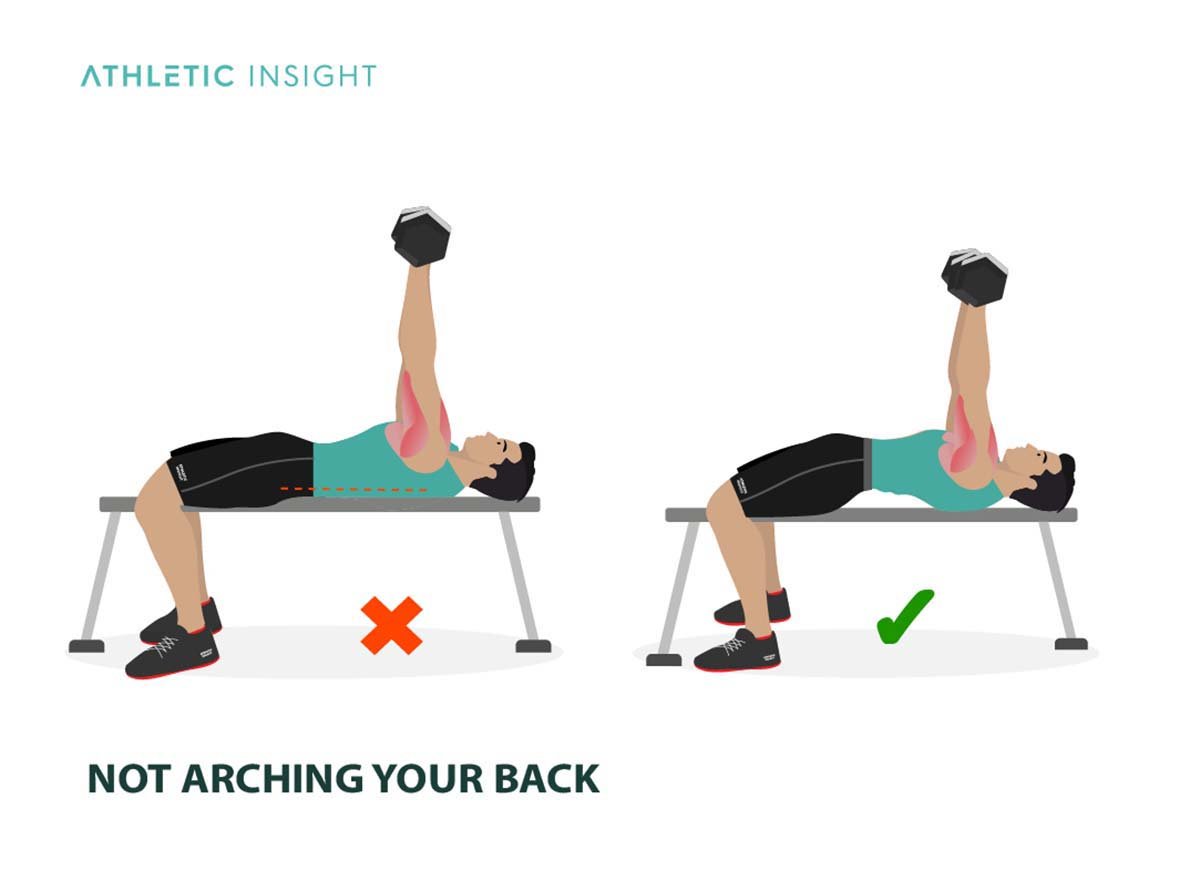
5. More or Less than a 45-Degree Angle with Your Arms
Good dumbbell bench press form requires athletes to keep their arms at a 45-degree angle. If the angle is more than 45-degrees, the dumbbells will hit too high on their chest. If the angle is less than 45-degrees, the dumbbells will hit too long on their chest.
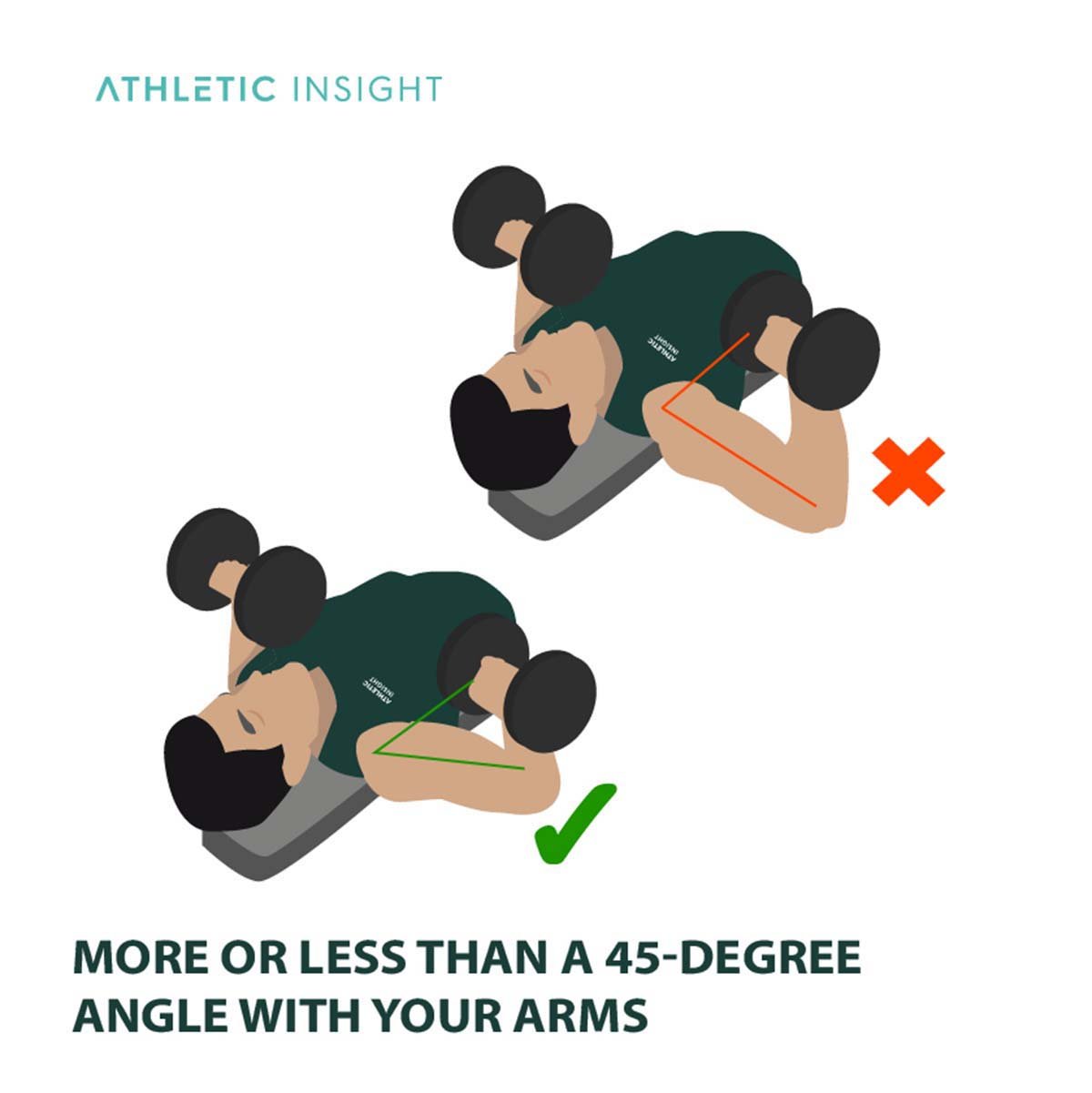
Not maintaining a 45-degree angle can put additional stress on your elbows. Additionally, it will cause this exercise to lose efficiency and not target the athlete’s pectoral and chest muscles.
6. Lifting Your Head
A common mistake athletes make while completing a dumbbell bench press is lifting or raising their heads. It can be tempting to look at the dumbbells, but lifting your head can cause neck pain and injury.
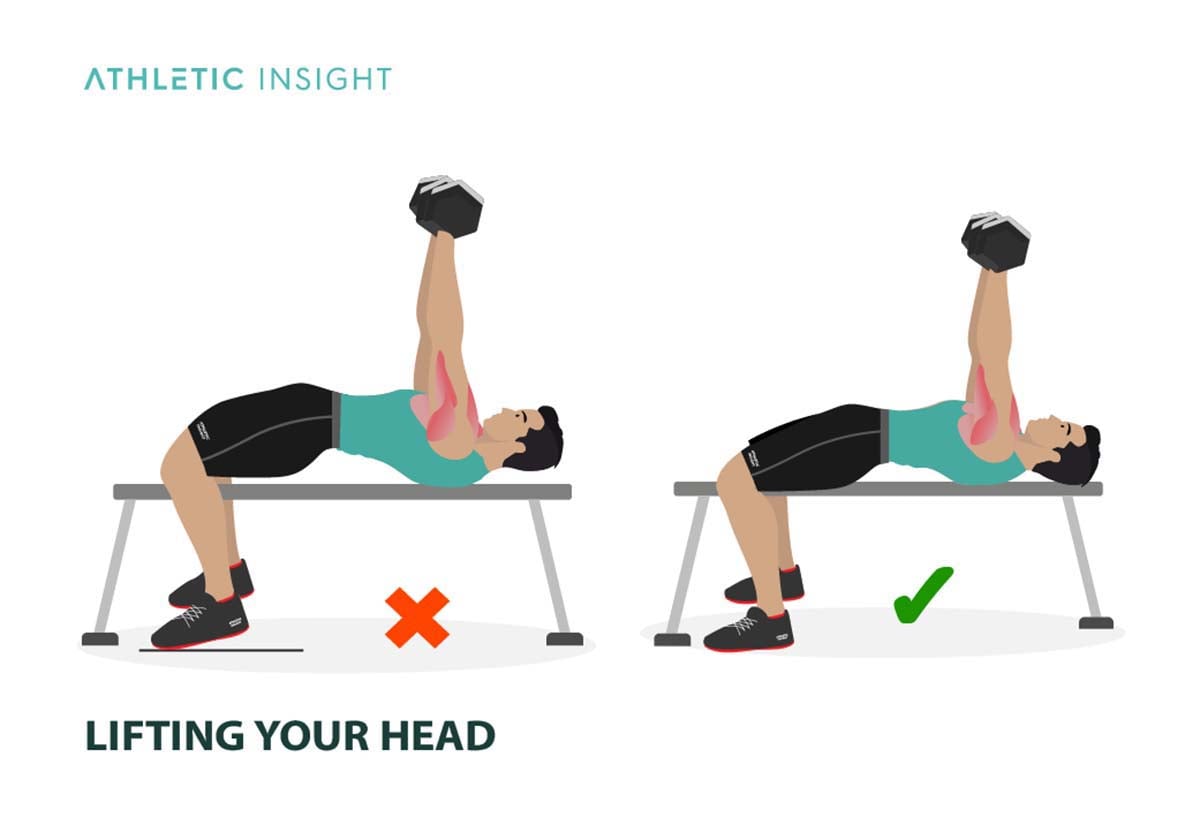
7. Too Great a Distance Between the Dumbbells
This is a common mistake when athletes are bench pressing too much weight. During a dumbbell bench press, the weights should stay above the athlete’s chest and move straight up and down.
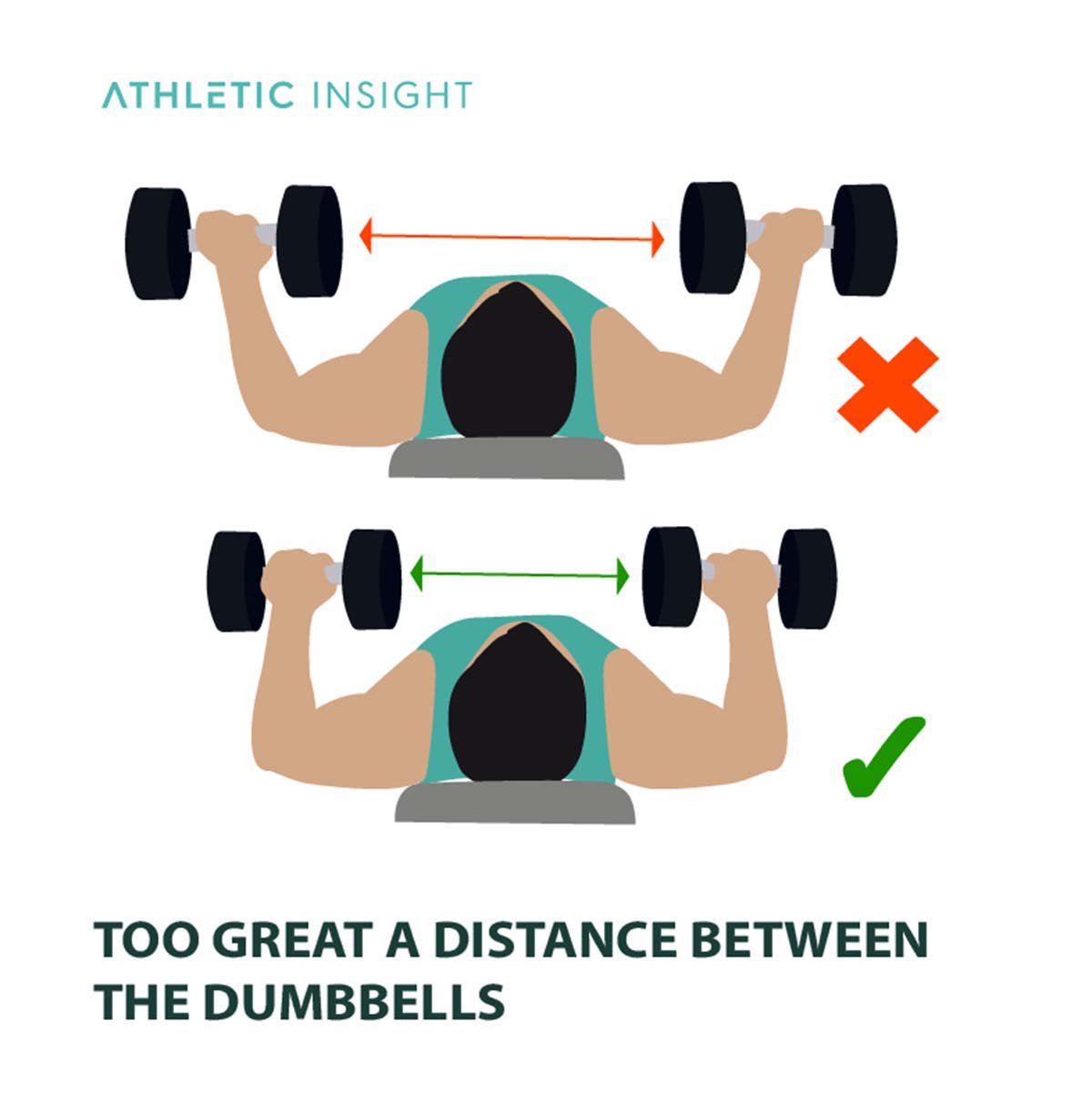
If the weights begin to point outward, this puts a great deal of stress on your shoulders and elbows. This can cause injury to both of these areas. Additionally, if you drop the weights, this could put other athletes in danger.
How to Determine Proper Weight for Dumbbell Bench Press?
When first learning how to master the dumbbell bench press, an athlete must use an appropriate weight. Attempting to lift too much weight can cause an athlete to develop bad habits and learn improper form. Additionally, it can be dangerous and harmful to lift too much weight.
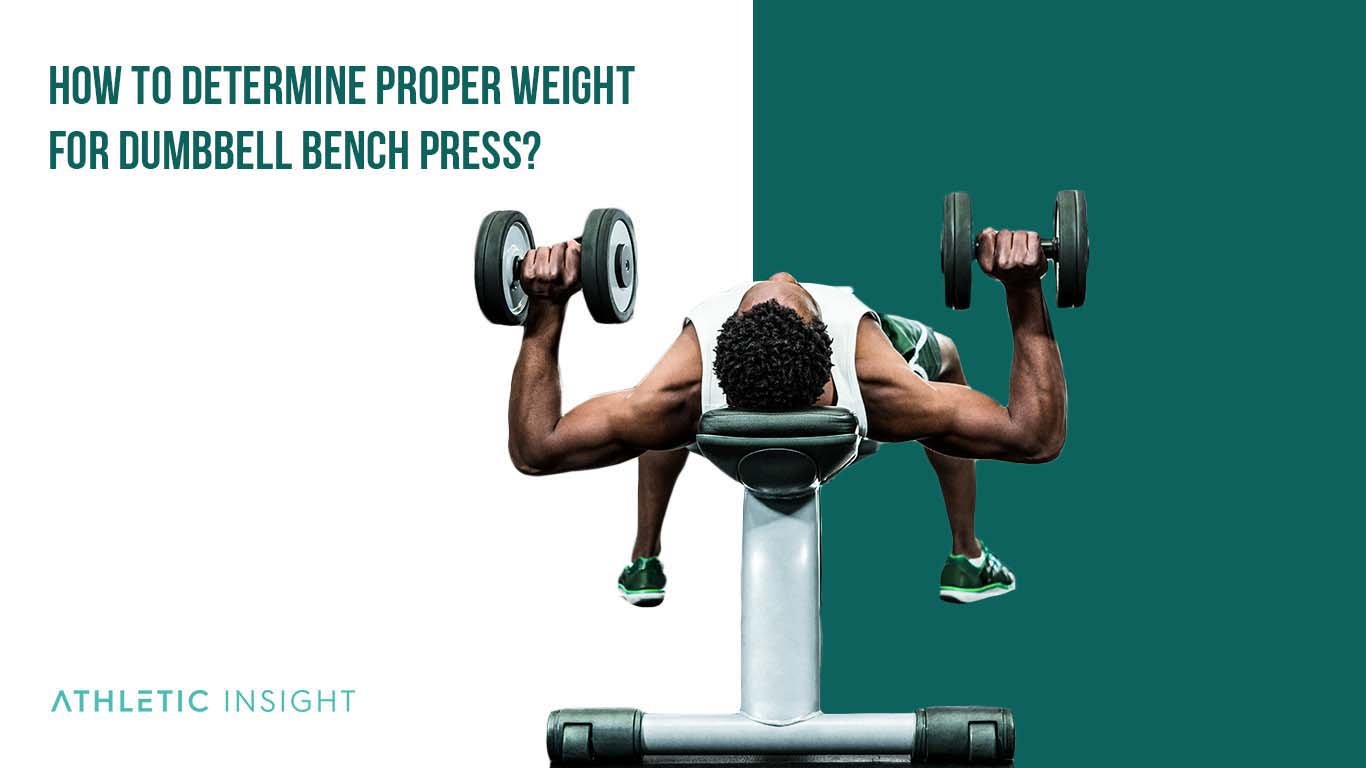
A good starting point is to select a small weight and attempt a set of eight to twelve repetitions. The athlete should complete at least eight repetitions using the correct form. They can continue to increase the weight until they cannot complete a set of eight to twelve reps.
Which Muscles are Involved While Performing Dumbbell Bench Press?
The dumbbell bench press is primarily a chest exercise. However, this compound lift benefits exercising several upper body muscles.
The primary muscles used are listed below.
- Pectoralis Major
- Anterior Deltoids
- Triceps Brachii
- Rotator Cuff
Pectoralis Major
The pectoralis major is the primary reason athletes use the dumbbell bench press. This muscle group is located in the center of your chest and is one of the most visible mirror muscles. The primary function of the pectoralis major is the rotation and flexion of the shoulder joint.
Anterior Deltoids
The anterior deltoids are located on the front side of your shoulder. They work with the pectoralis major to flex and rotate your shoulders. This muscle group works closely with your pectoralis major.
Triceps Brachii
The triceps brachii is located on the backside of your upper arm. The triceps are often visible when you straighten your arm. This muscle group is used to straighten your elbow. When you straighten your arms, the dumbbell bench press works your triceps at the end of the press.
Rotator Cuff
The rotator cuff is located on the backside of your shoulder. It consists of several small muscles that help stabilize your shoulder. The rotator cuff is exercised throughout a dumbbell bench press as you work to keep the weights stable and moving up and down.
Additionally, an athlete will use their core and back to stabilize their body while performing a dumbbell bench press.
How to Do Dumbbell Bench Press?
If you are ready to dominate the dumbbell bench press, you should follow these six steps.
- Lie back on a seat, holding a dumbbell in each hand to the sides of the shoulders.
- Palms face toward the feet in the beginning position, or if there are shoulder issues, use a neutral grasp where palms face each other.
- Maintain a neutral spine and strong core throughout.
- Press the loads over the chest by broadening the elbows until the arms are straight, then slowly lower the weights.
- Using dumbbells instead of a barbell makes it possible to bring the load past the shoulders and unite them at the highest point.
- Try not to touch the weights at the top because it reduces the strain on the muscles.
1. Body Placement
During this step, you are preparing your body to execute the lift. This step is the foundation of performing the dumbbell bench press.
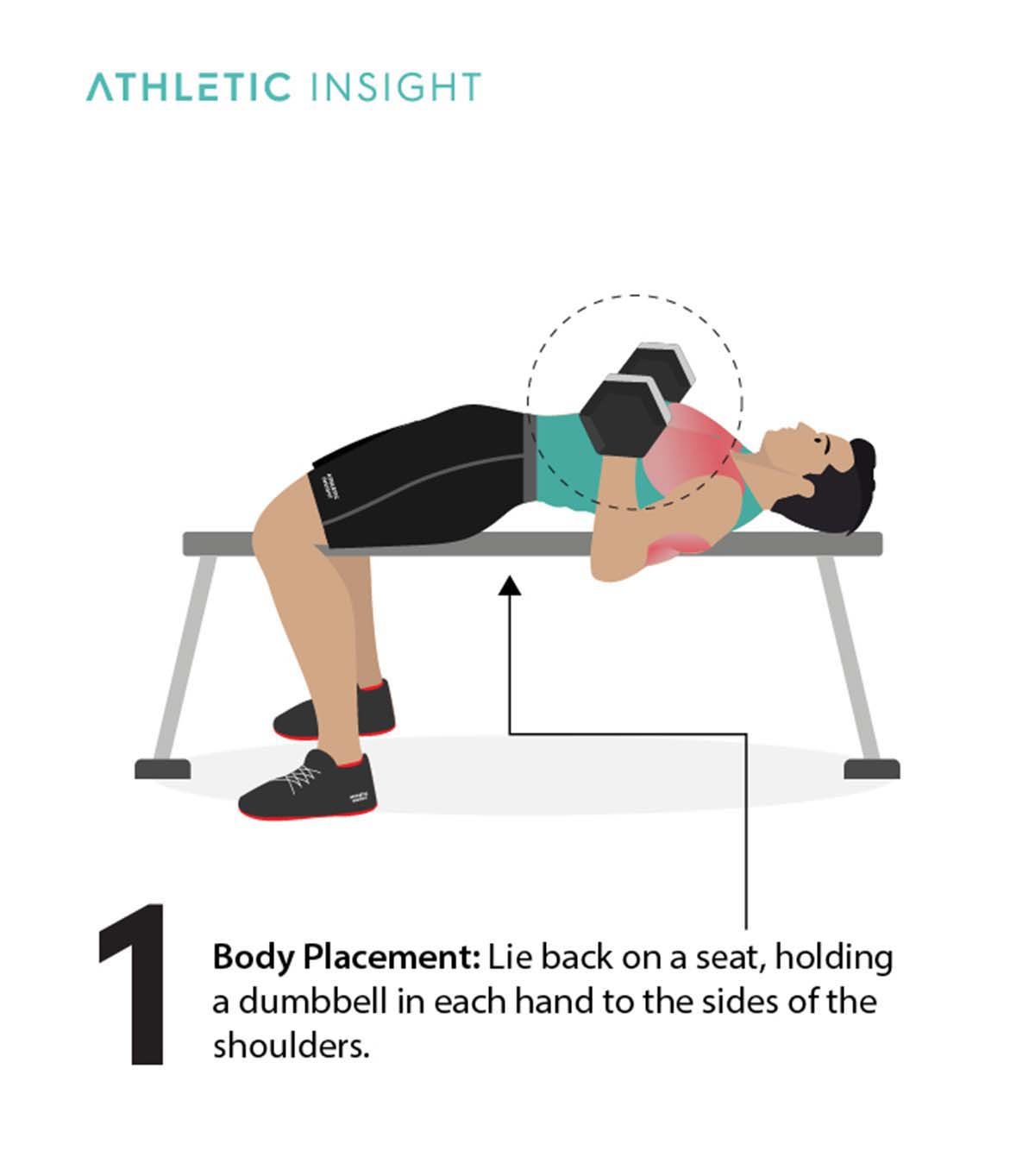
2. Proper Hand Position
Proper hand position is an integral part of the dumbbell bench press. It will help you maintain grip strength and keep the dumbbells in the correct position.
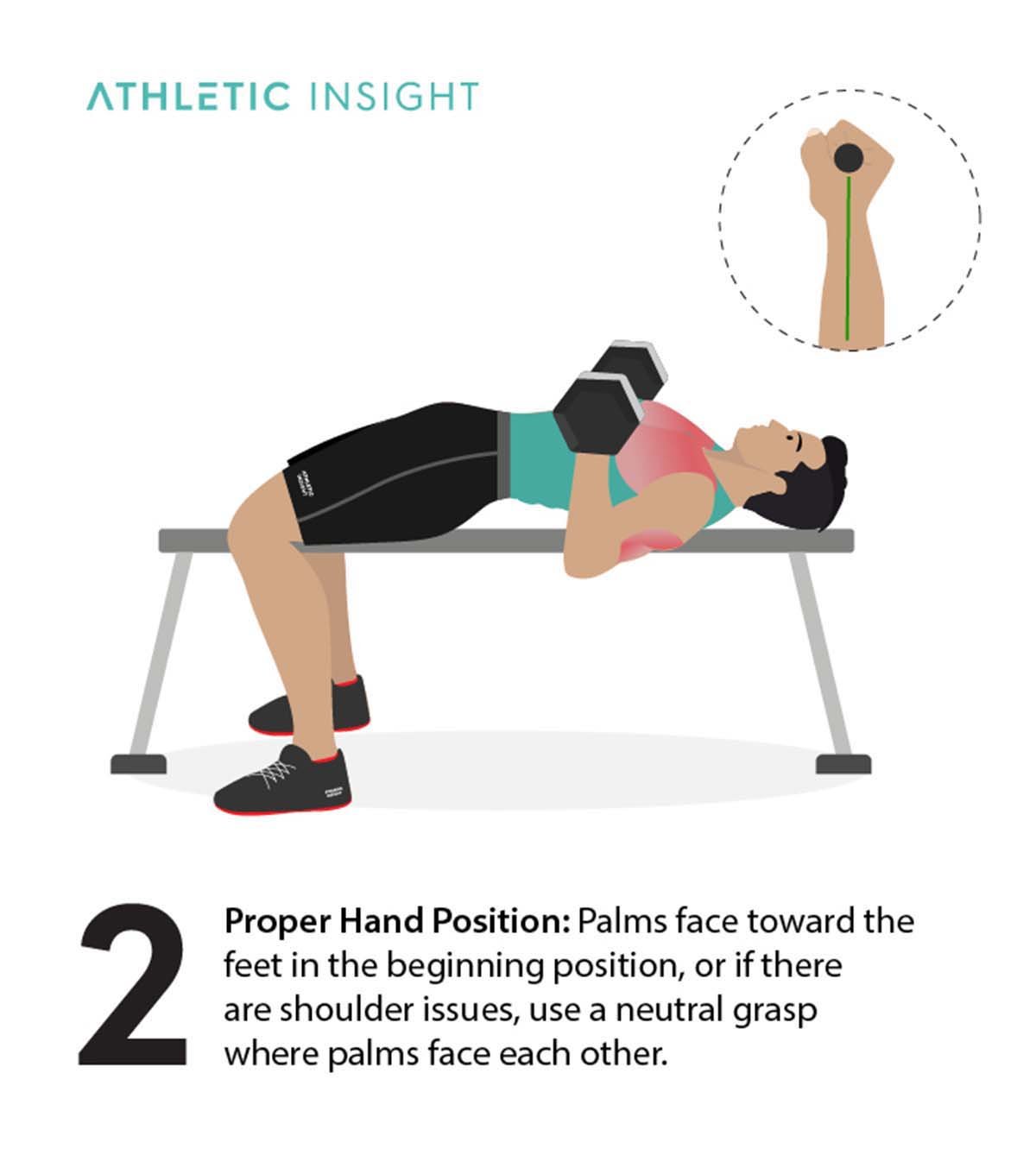
3. Maintain a neutral spine and a strong core throughout
A neutral spine and a strong core will help keep you balanced while performing a bench press. Additionally, it will help your back muscles stay in the appropriate position.
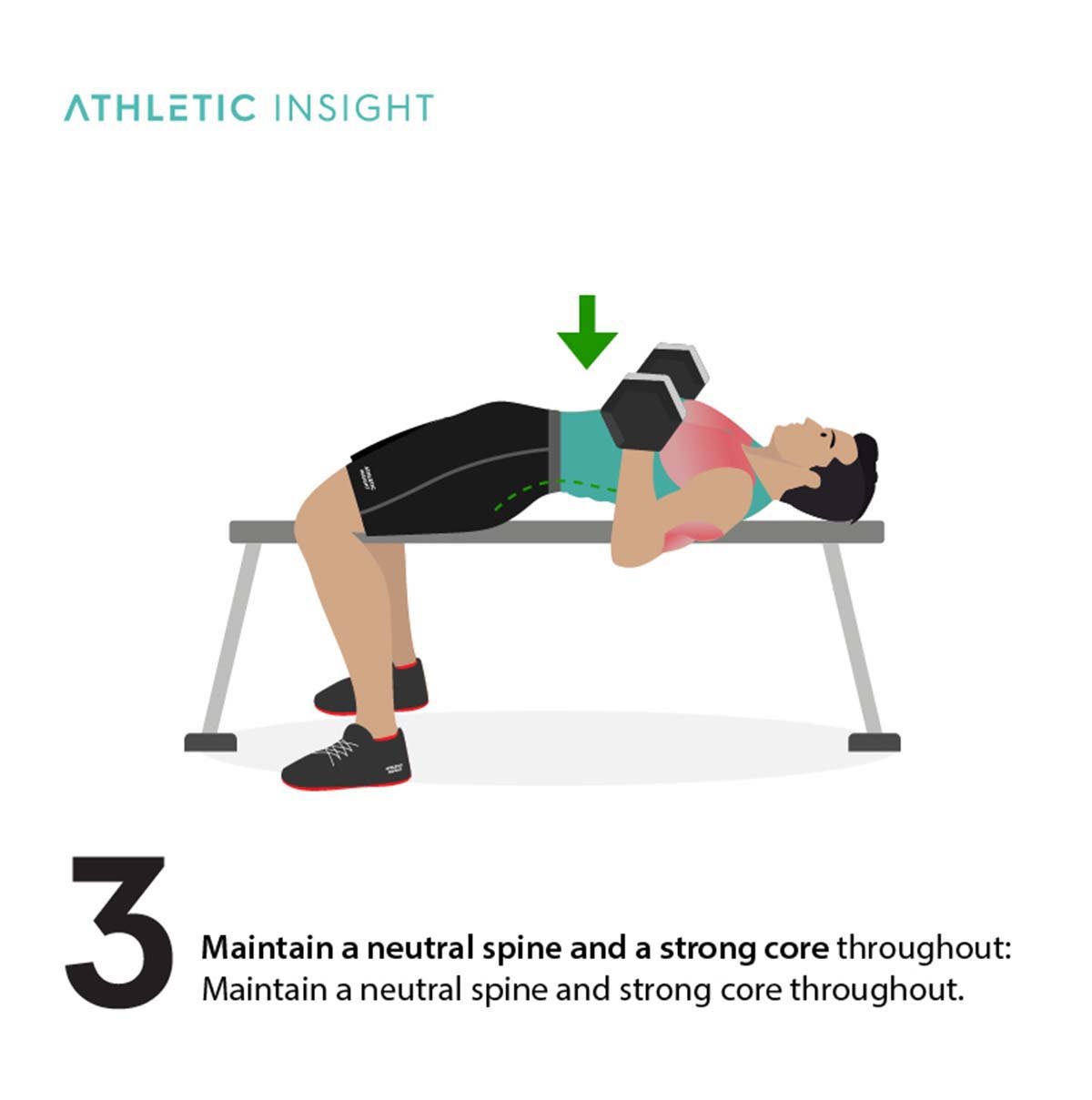
4. Maintain Control
When pressing the weight, you should always maintain control. Moving the weight too quickly can cause injury, and you won’t maximize your gains. Additionally, the weight should be kept directly above your chest to maximize the focus on your pectoral muscles.
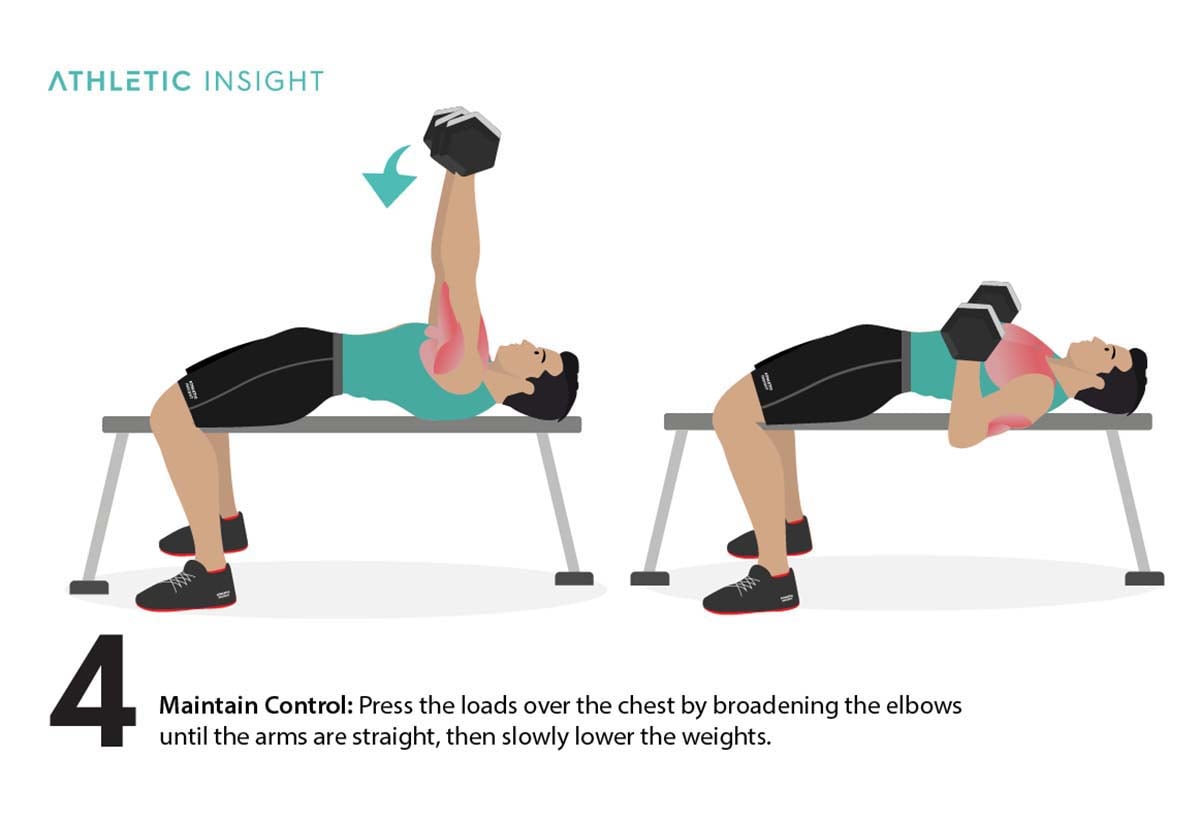
5. Proper Range of Motion
One of the primary benefits of the dumbbell bench press is the greater range of motion. To maximize this benefit, the weight should be below your chest at the bottom of the press. At the top of the press, you should bring the dumbbells together.
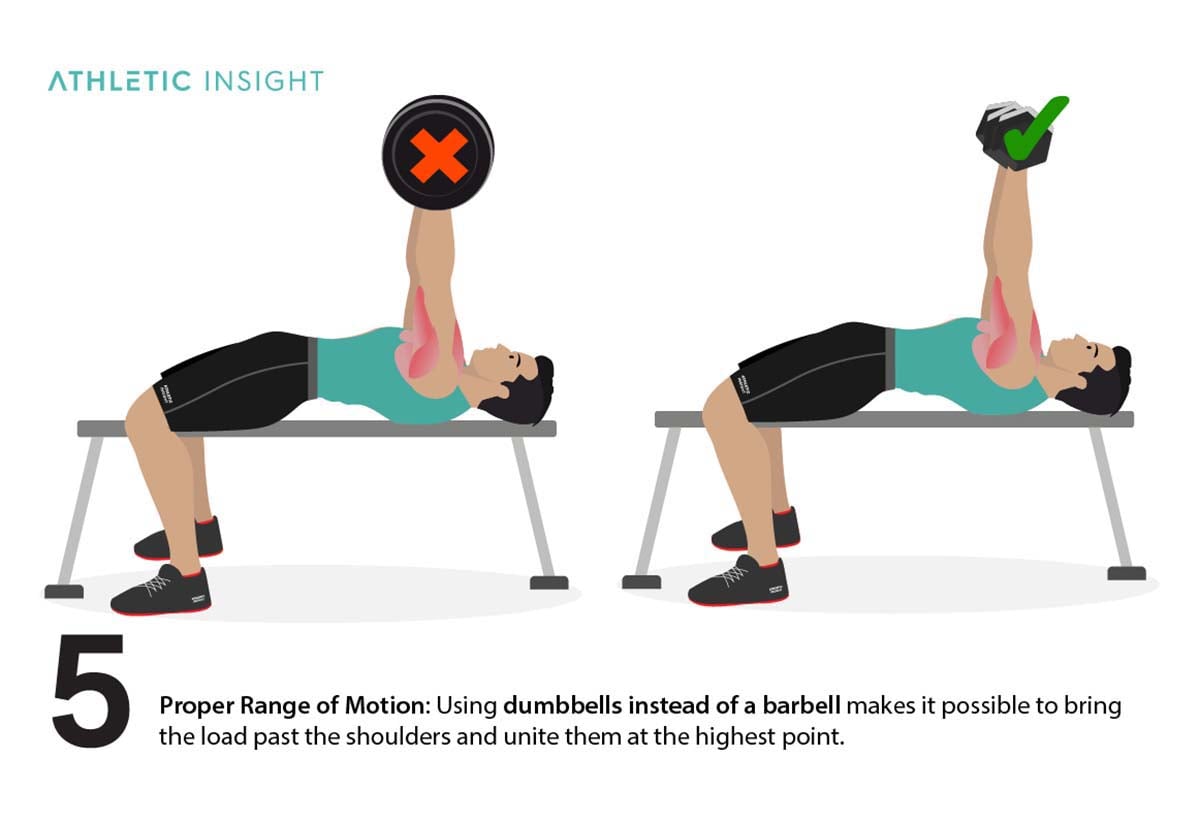
6. Don’t Let Dumbbells Touch
The dumbbells should almost touch at the top of the press, but not quite. Touching the dumbbells will take some of the strain off your muscles and decrease your gains.
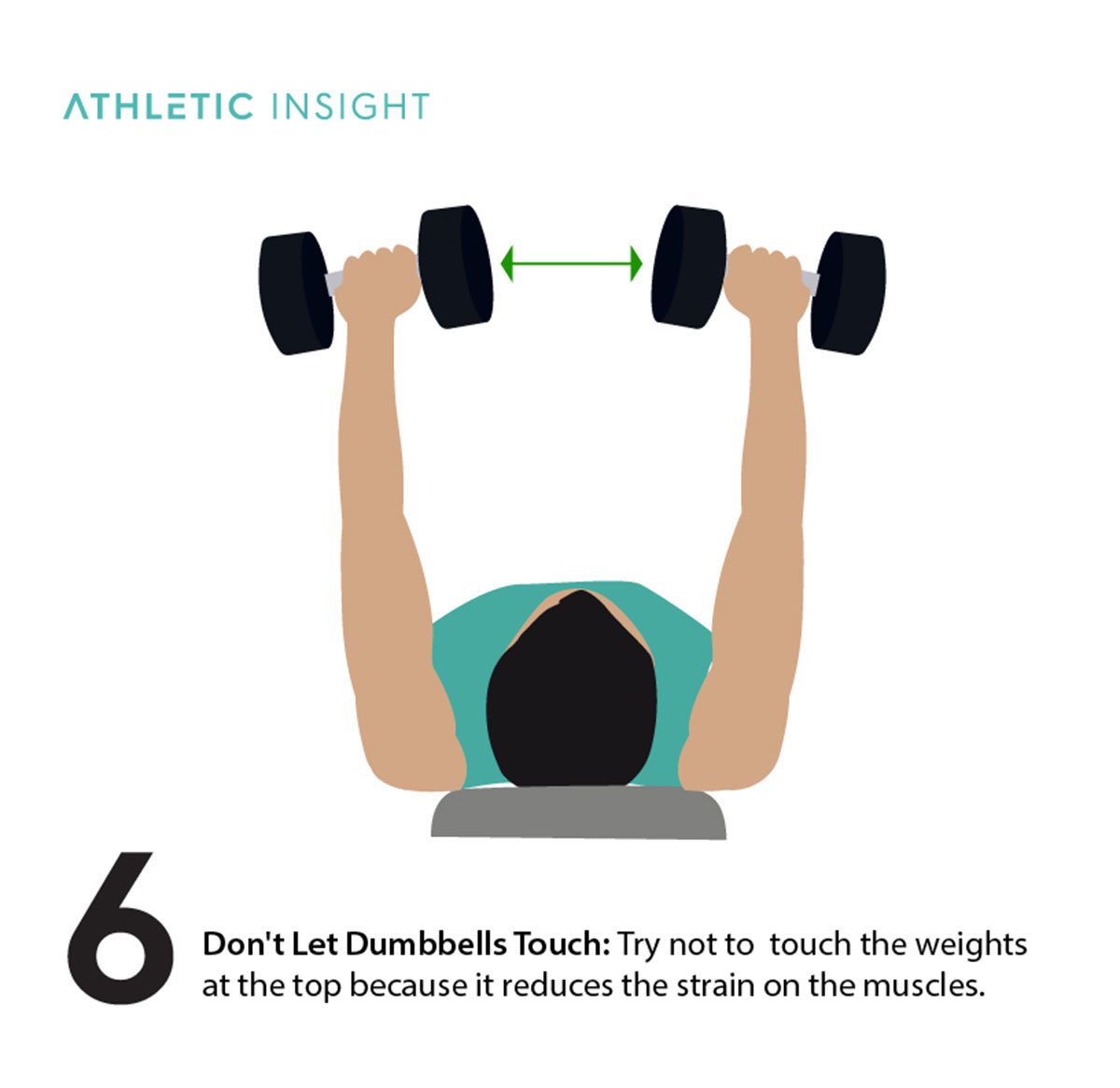
What are the Dumbbell Bench Press Challenges?
Dumbbell bench press challenges are various goals or tests that an athlete can complete. They are a way for athletes to push themselves to accomplish more in the weight room.
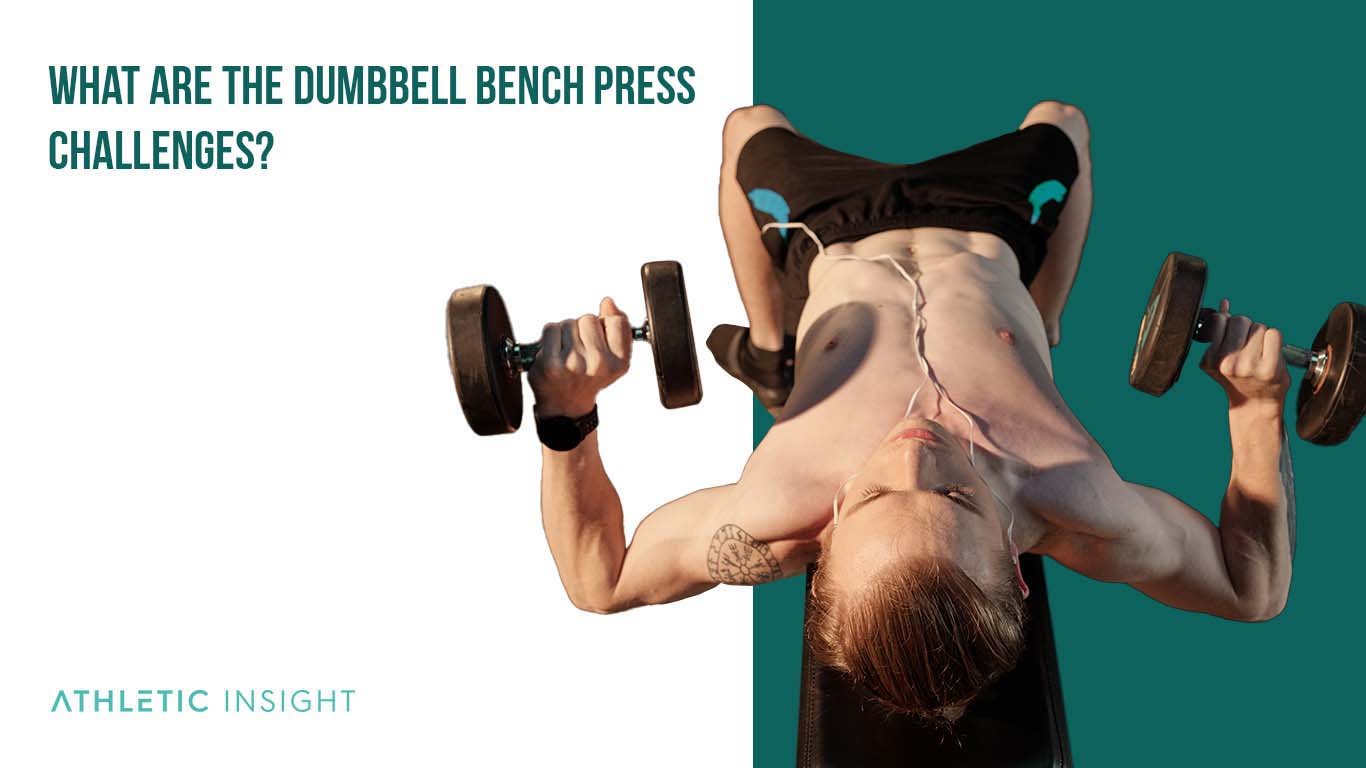
- Bodyweight Bench Press: The bodyweight bench press challenge requires the athlete to bench press their body weight as many times in just five minutes.
- 225 Bench Test: The 225 bench test has an athlete bench press 225 pounds until they fail.
- PREP Reps: Preparation reps or PREP reps is a challenge that has the athlete do several light-weight dumbbell bench press reps before pressing their chosen weight.
- Squeeze Press: The squeeze press is a variation of the dumbbell bench press. In this challenge, the athlete assumes a neutral grip on the dumbbell and pushes them together while pressing the weight.
- Bench Press 21s: Bench press 21s are also known as partial reps. In this challenge, the athlete bench presses 40% of their average bench press weight. They lift the weight only halfway seven times, then do the top half of the exercise seven times, and then the entire exercise seven times for a total of 21 reps.
- Failure to Failure: Training to failure is a challenge that requires the athlete to dumbbell bench press until they can no longer complete an additional repetition.
- Pull-Up and EMOM: Every minute on the minute (EMOM) is a challenge that uses 30% of an athlete’s max. The athlete sets a timer for ten minutes and does three repetitions at the beginning of each minute.
- Pull-Up and GVT: German volume training (GVT) is a challenge that has an athlete do ten sets of ten repetitions. The athlete should rest for 60-90 seconds between sets.
- Test the 1RM with Pull-Up: The one-rep max (1RM) challenge has the athlete do their maximum weight on a bench press for one rep.
What are the Dumbbell Bench Press Variations?
Given the popularity and effectiveness of the dumbbell bench press, there are a variety of variations of dumbbell bench press. Each variation changes the exercise to target a different part of the body.
- Incline Dumbbell Chest Press: The incline dumbbell chest press is a variation of the dumbbell bench press that is performed on an incline bench rather than a neutral one. This variation targets the upper half of your pectoral muscles.
- Decline Dumbbell Chest Press: The decline dumbbell chest press is the opposite of the incline dumbbell chest press. This variation is performed on a bench set at a decline and targets the bottom half of your pectoral muscles.
- Dumbbell Floor Chest Press: The dumbbell floor chest press variation is similar to the original exercise. The primary difference is that it is performed on the floor rather than on a bench.
- Dumbbell Wrist Rotation Chest Press: The dumbbell wrist rotation chest press features a similar form to a conventional bench press, but it adds a twisting motion. While pressing the weight up, the athlete rotates their wrist. This added step works the forearm muscles.
- Neutral Grip Dumbbell Chest Press: The neutral grip dumbbell chest press changes the position of the weight. Instead of maintaining a 45-degree angle with the elbows, the athlete keeps their elbows by their side, so the dumbbells run parallel to the athlete’s body.
- Alternating Dumbbell Chest Press: The alternating dumbbell chest press requires the athlete to alternate pressing the dumbbells. This variation works one side of the chest at a time.
- Single-Arm Dumbbell Chest Press: The single-arm dumbbell chest press has the athlete lift only one dumbbell at a time. This variation focuses on one side of the chest and effectively corrects muscle imbalances.
What is the Necessary Equipment for Dumbbell Bench Press?
The dumbbell bench press requires two pieces of equipment.
- A bench to lie on
- Dumbbells
Which Muscles Can Be Affected More by Dumbbell Bench Press?
The dumbbell bench press is a compound lift that focuses on the upper body, specifically a few muscle groups.
- Pectorals
- Triceps
- Deltoids
- Rotator cuff
This exercise works each of these muscle groups differently, and it targets some more than others.
Pectorals
This exercise primarily targets an athlete’s pectoral muscles. The pectorals do the majority of the pressing, and athletes can make significant gains in strength and bulk. It’s a key lift for those who need to balance their pectorals and increase chest strength to overcome plateaus with the barbell bench press.
Triceps
While the pectorals handle the lion’s share of the work, lifters rely on the triceps to provide stability throughout the lift and to complete the lockout. With dumbbells, it’s possible to alter the grip, which engages the triceps more to enhance definition.
Deltoids
For those athletes hoping to build sculpted shoulders, this exercise is a must. While the delts serve more as an accessory muscle, they stabilize the shoulders throughout the movement. Lifters engage the delts at different angles throughout the lift to improve strength.
Rotator Cuff
Like the deltoids, the rotator cuffs provide stability throughout the lift. The dumbbell bench press is an excellent way to strengthen the rotator cuffs, and it’s often included in shoulder injury prevention routines.
What Are the Dumbbell Bench Press-Related Facts?
The dumbbell bench press is popular for many reasons. It uses the same form as a barbell bench press, but lifters have a greater range of motion, so it’s easier to overcome plateaus.
Naturally, there are many questions and misconceptions surrounding the dumbbell press.
- Does Dumbbell Bench Press Affect the Hormones?
- Does Dumbbell Bench Press Increase Testosterone?
- Does Dumbbell Bench Press Affect the Mood?
- Is Dumbbell Bench Press Practiced Within CrossFit?
- Is Dumbbell Bench Press a Military Movement?
- Is Dumbbell Bench Press Dangerous?
- Is Dumbbell Bench Press Push or Pull?
- Is Dumbbell Bench Press Essential?
- What Can Replace Dumbbell Bench Press?
It’s time to clear things up and answer these pressing questions and concerns about the dumbbell bench press.
Does Dumbbell Bench Press Affect the Hormones?
Yes, the dumbbell bench press affects your hormones. This exercise can cause your body to increase growth hormone production. Growth hormone is produced to help your body repair itself after exercising.
Cortisol is also produced when performing the dumbbell bench press. Cortisol helps your body generate energy. However, cortisol helps the body create energy by consuming tissue. Keeping your cortisol levels low by resting between sets of snatch-grip deadlifts is essential.
Does Dumbbell Bench Press Increase Testosterone?
Yes, the dumbbell bench press can increase testosterone. Testosterone is a sex horomone and anabolic steroid. It is produced by your body during exercise to help repair the body after a workout.
Does Dumbbell Bench Press Affect the Mood?
Yes, performing the dumbbell bench press can affect your mood—the dumbbell bench press and exercise in general affects your brain. Exercise causes your brain to release endorphins which can positively impact your mood. Additionally, exercise can improve your sleep, and getting higher-quality sleep can put you in a better mood.
Is Dumbbell Bench Press Practiced Within CrossFit?
No, the dumbbell bench press is not commonly practiced in CrossFit.
Is Dumbbell Bench Press a Military Movement?
No, the dumbbell bench press is not a military movement.
Is Dumbbell Bench Press Dangerous?
No, the dumbbell bench press is not dangerous if the athlete uses the proper form and lifts an appropriate amount of weight.
Is Dumbbell Bench Press Push or Pull?
The dumbbell bench press is a push exercise because athletes have to push the weight away from their bodies.
Is Dumbbell Bench Press Essential?
Yes, many consider the dumbbell bench press an essential weight lifting exercise.
What Can Replace Dumbbell Bench Press?
The chest fly is a great exercise to use if you want to replace the dumbbell bench press because it affects your chest as well as other body parts. It is a compound lift and works your entire upper body, including your pectoral muscles.

